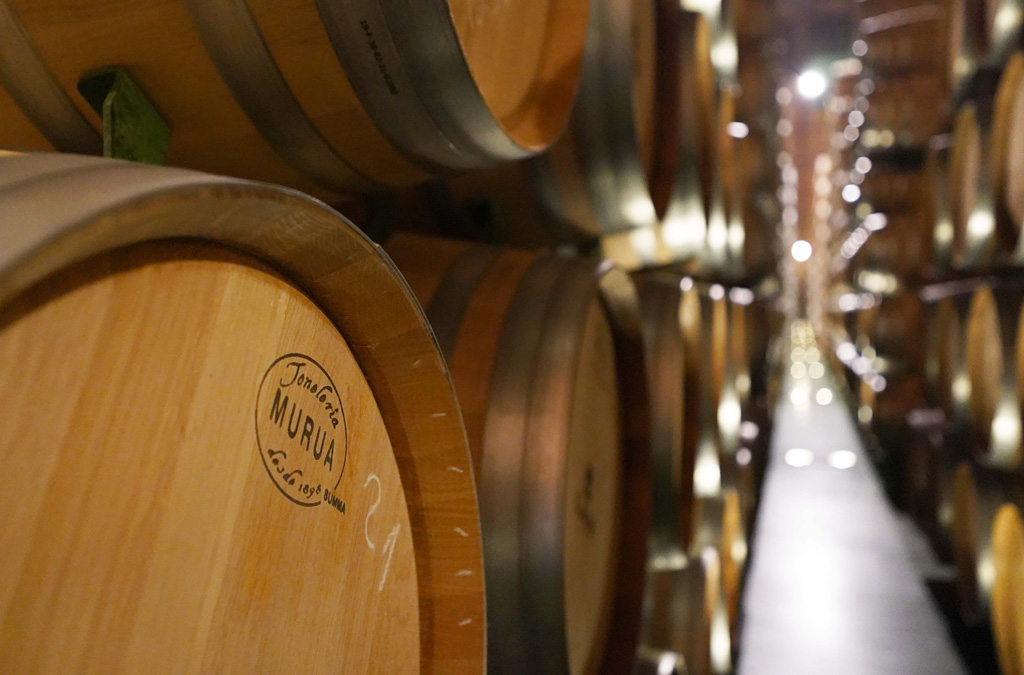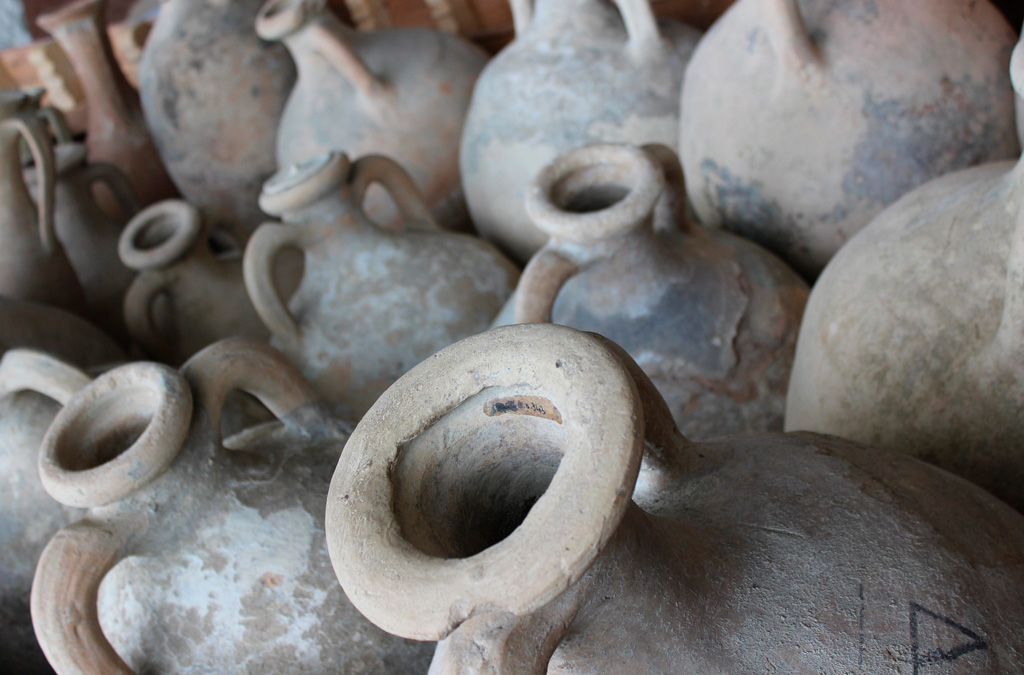From Egyptian amphorae to Spanish oak barrels
The creation of a barrel is an art in itself. It is still widely carried out by hand, as in the case of Tonelería Murúa. In 1898, Justo Murúa founded one of the first cooperage industries in Europe. It was the culmination of a dream that he began to forge by working with the French master cooper Jean Pineau. Justo Murúa was a visionary in the way he understood this business, always going ahead, which is why he incorporated modern machinery that facilitated some of the traditional processes.
The Egyptians, Celts, Romans were also visionaries… They all sought the best container for storing and transporting wine. Because the preservation and transport of wine has evolved throughout history. General thinking tends to relate wine and Rome, but its production and storage dates back much further, to the time of the Egyptians, more than 3,000 years BC. Although in Ancient Egypt the predominant drink was beer, wine was reserved for the pharaoh, priests, nobles and the upper classes.
Numerous studies show that the grape harvesting process was carried out in a similar way to today, with grapes being crushed and fermented, although in amphorae. The amphorae were the containers used to preserve the wine. During those centuries, an evolution of the amphorae has been observed, from sealed containers with reed and clay joints and coated inside with pitch, which ensured that the wine was preserved for years, to 60-centimetre ceramic bottles with handles. Research carried out by a team from the University of Barcelona has managed, for example, to identify traces of red wine in Pharaonic amphorae, specifically those found in the tomb of Tutankhamun.
The Egyptians also traded wine, which was transported in these amphorae. On the outside of the amphorae, in the form of a wine label that was hand-written or engraved by potters directly onto the wet clay or pottery, a series of information was included: the year of the harvest, the name of the owner of the vineyards, the geographical region where the wine had been produced and the quality of the wine, among other things.
The problem of transporting wine in amphorae lies in the fragility of the amphorae. Wine was largely imported into Mesopotamia from Syria and Armenia. Later, it was the Phoenician merchants who began to trade wine throughout the Mediterranean basin, replacing amphorae with skins.
The heyday of trade and casks
The Greeks and Romans, like the Egyptian civilisation, used clay and earthenware jars and amphorae – with two handles and a long narrow neck. These were not very resistant to shocks and broke easily. With the rise of the Roman Empire, there was also an increase in the production and consumption of wine and, consequently, a boom in the wine trade. It was therefore necessary to minimise losses.
The Romans discovered, when they conquered Gaul, that the Celts used barrels to store liquids, mostly beer. At first, the Celts simply hollowed out the inside of pieces of logs and covered them. However, their technique evolved. The Celts had learned to work the wood and heat the planks to shape them, a method similar to the one they used to make their boats. They applied what they had learnt in the manufacture of boats to the creation of barrels very similar to those of today, achieving a perfect watertightness with the union between the staves and their perfect assembly, as well as with the external hoops – made of wicker or wood, precursors of today’s metallic ones -.
Thus, little by little, the barrels replaced the jars and amphorae. The curvature of the staves was decisive, as one person could move them by rolling them. Until relatively recently, all wine was traded in barrels.
In the beginning, pine, beech, cherry, ash, acacia, chestnut, spruce and oak were used. It was precisely the latter that was used most frequently, due to its strength and abundance. The volume of the barrels was also standardised. This gave rise to sherry casks and Port casks (500-550 litres, for the production of Sherry, Madeira and Port wines), Bordeaux casks (225 litres, the size used in Bordeaux) and 300-litre casks (used for Burgundy wines). The standard size is 220 litres.
Barrels, wine ageing containers
Over the years, barrels ceased to be mere transport containers and became an important part of wine ageing. Certain wines showed an improved profile after a period of time in barrels, and there were even differences in the wines depending on the number of times the barrel was used, the type of wood used to make the wine or the degree of toasting inside the barrel.
Undoubtedly, the species and origin of the wood are factors that influence the composition of the wines. Nowadays, mainly French and American oak -easier to bend and impermeable- are used, which confer different qualities to the wine. However, in recent years, the use of wood from other origins, such as Spanish oak (Quercus Pyrenaica), has been increasing.
At Tonelería Murúa we seek to provide winemakers and wineries with other materials to house their wines in barrels and, for this reason, we study alternatives to American and French oak. Different research has concluded that Spanish oak has the same quality as French or American oak, although it is a more exclusive and expensive material.
YOU WILL FIND US AT OUR NEW ADDRESS: AVDA LENTISCARES 35, 26370 NAVARRETE, LA RIOJA.





